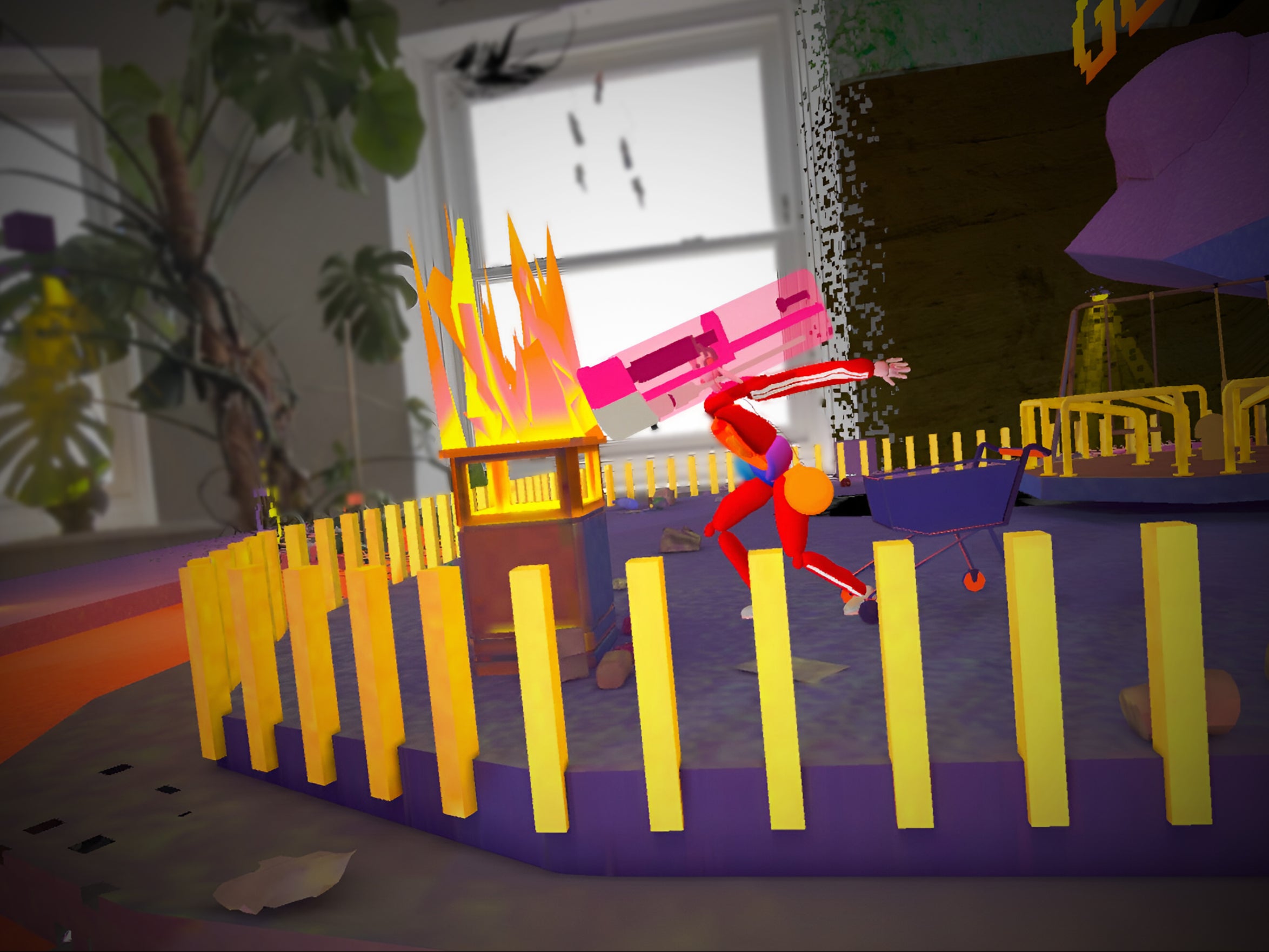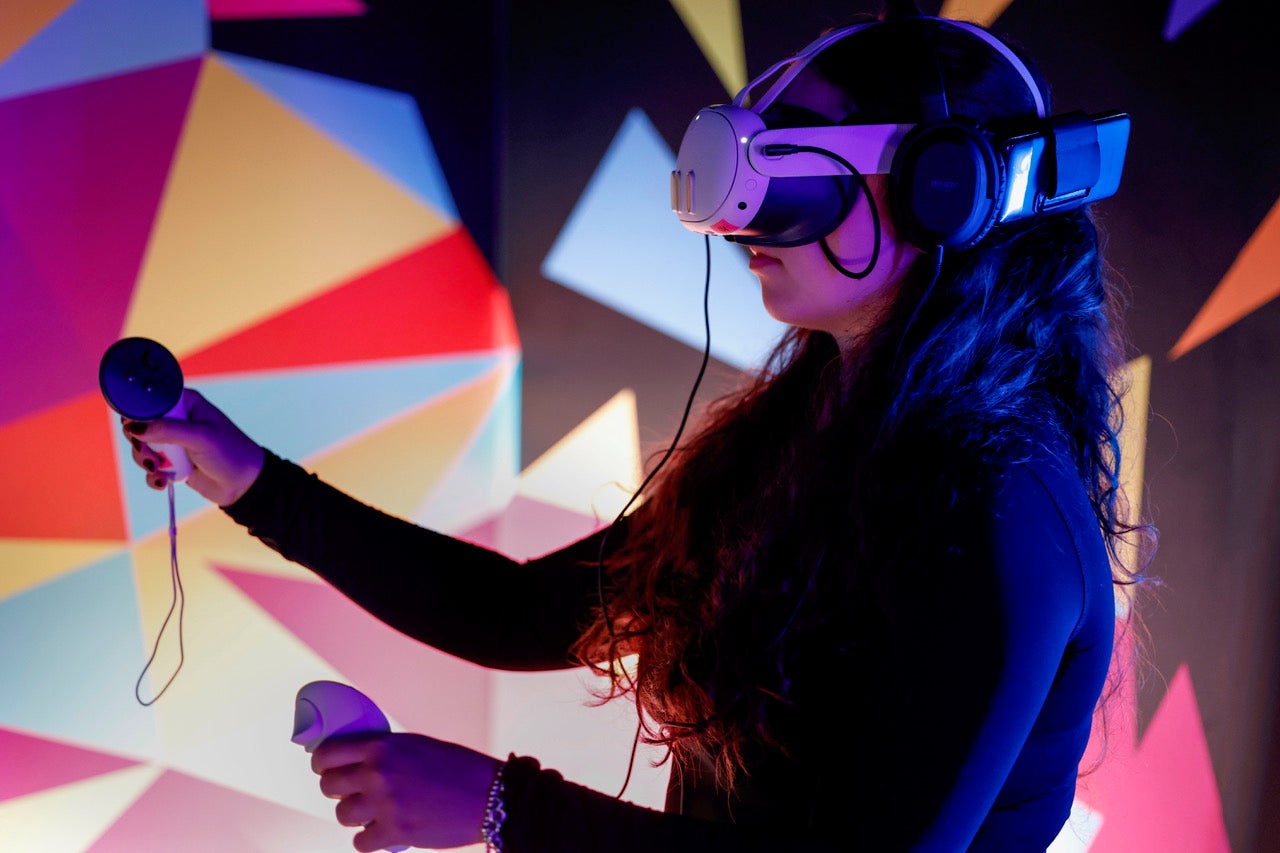Sorry, but Paris Hilton saying that ADHD is her superpower is just not that helpful
The singer is just the latest A-lister to reclaim her ADHD as something which has helped and not hindered her. But that just does a disservice to those who have been given the diagnosis, but none of the help needed to navigate real life, says filmmaker May Abdalla


Last week, Paris Hilton wrote in Teen Vogue that ADHD was one of the reasons for her huge success. To quote her song, “ADHD”: Now, look at me, I'm the best I can be/ I was so down, thought I'd never be free/ My superpower was right inside, see?/ It was ADHD
ADHD’s “superpowers” have become part of the mainstream discourse. Risk takers will start companies; lateral thinking means edgy creative takes, stubbornness means a dedication to things you believe in even when everyone else disagrees. ADHDers can stay up all night, hyperfocus and when inspired can get things done.
The truth is however, depending on your circumstances and who you are, your “superpowers” will glean very different responses. The experience of ADHD isn’t just what goes on in your head, it’s how the world around you reacts. And not everyone gets the support to thrive, never mind survive.
One in 4 prisoners have undiagnosed ADHD – 10 times higher than the wider population. Risk-taking tendencies can lead to making the kinds of mistakes that scar you forever, and whether you’re seen as a maverick or a miscreant can vary widely depending on your circumstances. Black children, for example, are more likely to have their symptoms misattributed to disruptive behaviour than be offered a diagnosis.
Many women internalise the shame of being perceived as spaced out, unreliable or “too much”, often finding that some of the more “masculine” gendered traits of ADHD, like a tendency to interrupt and excessive talking, are much less tolerated when it is a woman doing it.
For the past two years, as a filmmaker, I have been interviewing people with ADHD to create a virtual reality experience that can help people understand what it really feels like to live with the condition.
The result is Impulse, which runs until 27 October at the London Film Festival and is based on hundreds of hours of interviews with people on the severe end of the ADHD spectrum, and invites you to immerse yourself in the stories of four real-life people.
Errol talks about going out and smashing up cars, before getting sent to “a home for naughty boys” at 11. Tara struggles with debilitating mental health issues and self-harm. As in Paris’ lyrics, she too calls herself “too much”. It’s a refrain we heard over and over, “being too much, taking things too far”.
Leanne feels alienated from other people because of her volcanic moods. Omar gets into crime at a young age, finding that it’s only on the job that his mind calms down and focus kicks in.
Are these extreme stories? Whilst online scrolling might lead you to think that ADHD is a vague condition, resulting in a distractible overly-talkative teen with a tendency to overshare, the truth is that it can severely affect an individual’s education, work, relationships and life outcomes.

For many, receiving a diagnosis is a light bulb moment; not the end but the start of the journey. In making Impulse, I’ve listened to almost a hundred people talk to me about their diagnosis. And it is a very personal story too. Like thousands of others across the UK, I have been waiting three years and counting for an assessment, hoping that finally, at the tender age of 41, my own behaviour will start to make sense. Why am I constantly getting into arguments with the people I love, why did I write “Shut up!!” on my hand every day at school to remind me not to blurt things out? And no, it never did work.
I remember being called in after school to see my teacher. “Spell ‘chair’!’” she commanded. I spelled it for her. “Well then! If you know how to spell it, why is it wrong, here and here?!” she said pointing to my dictation exercise. “It’s faster to write it wrong,” I explained. Of course, it was faster. It’s the thinking that takes time. The effort of restraining the impulse.
What I have learnt through talking to people with ADHD, is that receiving a diagnosis isn’t just a pathway to medication, but a moment that provides a profound realisation. It allows people to reassess the struggles they’ve experienced in their lives so far, so they can learn to ask for the help that they need to deal with something they cannot control.
Whilst the narrative around ADHD as a superpower can help open dialogues, the issue with framing this condition in this way is that it is understood as something you can turn on and off. The ADHD brain doesn’t have that agency.
From the chemical and biological conditions it arises from, right up to the environmental situation where it plays out, it's not a choice. With ADHD, the individual never gets a moment to see themselves without it – to understand where they begin and the condition ends. It’s an eternal, exhausting struggle, and it’s leading to a generation of wasted talents.

From the 200-plus hours of interviews we conducted at Anagram, the voice that stayed with me the most was a woman in her fifties only now coming to understand what had led her to “fail at everything I tried to do, no matter how hard I tried”.
It was heartbreaking and shows how important it is to build the scaffolding to help support those with ADHD to live fulfilled lives. And it starts with building understanding.
With Impulse, we wanted people to really have the experience of living inside the brain of someone with ADHD. Using VR headsets in a real environment allows you to feel how someone with ADHD might view the world around them.
Early in the experience, users are asked to fire matching objects at each other. This appears simple until the intensity of the music and the visuals means distraction and panic overwhelms them. The game simulates an “amygdala hijack”, the moment when the emotional response floods the brain and making rational decisions becomes impossible.
At other points, words split out into related ideas and objects. The challenge is to make sense of what you’re trying to read when ideas interrupt and expand each thought into vast new ideas. This is what it is like to live with ADHD.

We know that there are chemical processes that enable decision-making, which precede thought itself. We also know that a lack of dopamine can encourage behaviours that offer adrenalin. Being unrewarded for an action will inhibit it from being encouraged at a later point. Many of those diagnosed with ADHD can be seen as lazy, but substitute that word with disheartened and you might understand where the feeling of failure and giving up that affects so many with ADHD comes from.
I have lost many a day wracked with fear that a project won’t be good enough, replaying any critical comment I’ve received, however minor, so much so that the act of even starting to think becomes impossible. Like many, I end up working double days – the working day when my colleagues are around and then through the night.
With record numbers of people being diagnosed, many are claiming it’s a fad; that we are over-medicalising normal everyday struggles. But, maybe, in the past, we have simply overestimated the number of unaffected brains and just labelled them in a different way? Think back to that naughty kid in class, that disruptive teenager, that chaotic worker. Could it have been that there was something else going on that, had it been treated, would have helped them become the people they were meant to be?
There have been many innovations to speed up diagnosis of ADHD, ranging from VR headsets with eye tracking to mobile games to help sort out the backlog, but what happens next? Is it really down to each person to battle their impulses, to figure out their problems alone? Medication can deal with some of the neurobiological challenges, but it’s not going to help with overcoming a lifetime of critical thinking or the many environmental issues that exacerbate the issue.

It is only through building compassion that we can start to create support structures that are flexible but also hold people to account so that they get to where they want to be. Ironically it wasn’t until our interviewee Omar was sentenced to prison, that he read his first book. It changed his life, gave him a tool, and now he’s a poet, a writer and an advocate for reading inside prisons. But it shouldn’t have come to that.
Beyond education, employers too need to get to grips with accepting ADHD and designing work practices that work for the people they hire. There are some brilliant work-around coping mechanisms out there that people with ADHD can employ – including making small environment changes and learning to ask for things that they might need – but we need the understanding of employers too.
Video calls, for example, require people to look straight ahead and sit still in a way that we understand as “performative listening”, something that you might not do in an IRL meeting, and which can be especially challenging for those with ADHD. Allowing people to switch off the camera or being understanding to those who might want to pace or water the plants whilst being part of the meeting could be really beneficial.

Ostensibly, there isn’t a rule book as everyone is an individual, but ultimately building compassion around what the condition feels like will allow managers to respond intuitively. And if they do that, then they just might get access to some of that untapped brilliant thinking that could be really beneficial to their organisation or project.
It’s estimated that around 20-50 per cent of those working in the creative industries are neurodiverse (compared to 15 per cent of people in the UK) so that’s a lot of personnel power right there.
At the Venice Film Festival, a man stepped out of Impulse with tears in his eyes. “I finally understand what my wife is going through. I hadn’t realised what it was she needed from me”. With more compassion, maybe we can all start to figure that out.
Impulse: Playing With Reality runs at the BFI London Film Festival until 27 October, as part of LFF Expanded. Tickets are available here. You can find out more about ADHD Awareness Month here.





Join our commenting forum
Join thought-provoking conversations, follow other Independent readers and see their replies
Comments